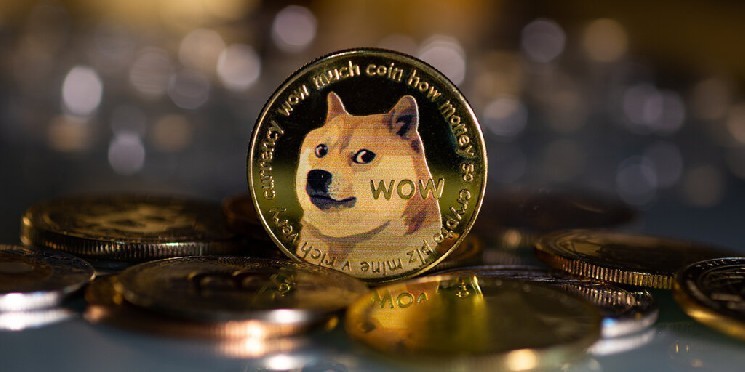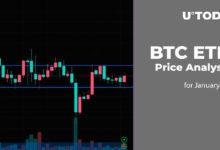Meme Tokens and NFTs Took Over Bitcoin—Now It’s Happening on Dogecoin and Litecoin

Meme coins are on the rise in unfamiliar places thanks to Ordinals, the project launched in January on the Bitcoin network. It started with an NFT-like effort to «inscribe» assets like artwork and profile pictures onto Bitcoin’s blockchain, but soon evolved to support BRC-20 tokens minted using the same protocol.
Now, thanks to the sensation surrounding Ordinal inscriptions and meme tokens on Bitcoin—not to mention the increasingly high network fees that resulted—inscribers have brought the latest craze in blockchain to Litecoin and Dogecoin. And in the process, they’ve sent daily transaction totals to the moon.
On Wednesday, the three largest proof-of-work blockchains by market capitalization collectively tallied over 2 million daily transactions: 579,260 on Bitcoin, 363,885 on Litecoin, and 1.126 million on Dogecoin alone, per data from BitInfoCharts. Each chain has also marked a respective all-time single-day peak for transactions so far in May.
Dogecoin Activity Surges With Ordinals—But a Core DOGE Dev Is Skeptical
How did we get here? Ordinals coming to Litecoin and Dogecoin was a natural progression, considering that Litecoin is a fork of Bitcoin and Dogecoin was based on code forked from Litecoin. They’re all related, in a sense, and that’s what has led to the migration of Ordinals tech from Bitcoin to the others.
Meanwhile, the BRC-20 and subsequent LTC-20 and DRC-20 standards were inspired by Ethereum’s ERC-20 tokens, allowing developers to create “fungible tokens” on the blockchains. It was a lighthearted experiment on Bitcoin… until the tokens caught on and nearly reached a collective $1 billion market cap.
Given that, it’s no surprise to see the trend catch on elsewhere since. And Ordinals and the resulting meme token frenzy is already having a sizable impact on Litecoin and Dogecoin alike. Here’s a look at how it happened.
Bitcoin Ordinals
In January, software engineer Casey Rodamor released the Ordinals protocol, which let users transfer and receive individual satoshis—that is, the smallest denomination of a Bitcoin (1/100,000,000 BTC). The key upgrade here is that they could include inscribed data like videos or images, instead of simply storing transaction data.
In March, Ordinal inscriptions hit a new high after a pseudonymous creator named Domo launched the BRC-20—short for «Bitcoin Request for Comment»— implementation. BRC-20 allowed the creation of «fungible tokens» on the Bitcoin network, opening the door for anyone to create meme tokens on the original blockchain.
Bitcoin BRC-20 Tokens Near $1 Billion Market Cap as Exchanges List ORDI
As newer tools and infrastructure have made Ordinals easier to inscribe and handle, the total number of inscriptions has soared, topping 8 million as of this writing. And with over 24,000 BRC-20 tokens minted to date, the total combined market cap is currently over $618 million—and previously neared $1 billion in total. Bitcoin transactions set a single-day record of 682,000 on May 1 amid the meme token frenzy.
Critics of Ordinal inscriptions point to the rising cost of transactions on these blockchains now that blocks are filled with JPEGs and meme tokens, with some going so far as to call it a potential attack vector and that Ordinals and meme tokens should be blocked on the network. However, proponents of Ordinals say that the higher cost help secure the network.
Litecoin Ordinals
Following the Ordinals-fueled explosion in activity on the Bitcoin network, the inscription protocol made its way to the Litecoin network. Litecoin was launched in 2011 as a fork of the Bitcoin blockchain and was a prominent cryptocurrency for years, though it has been overshadowed at times by newer and buzzier coins.
Ordinals came to Litecoin in February after a challenge from pseudonymous Twitter user Indigo Nakamoto, who initially offered 5 LTC (around $500) to anyone who could port the Ordinals protocol to Litecoin—and the prize pool quickly grew. Software engineer Anthony Guerrera launched Litecoin Ordinals after forking the Bitcoin code.
Litecoin Activity Hits All-Time High Thanks to Ordinals Mania
In May, the LTC-20 standard was introduced to Litecoin, bringing meme tokens to the network. Litecoin transactions surged after the addition of Ordinals, going from 100,684 transactions on May 1 to hit an all-time high of 584,836 transactions on May 10. Over 2.6 million Litecoin Ordinals have now been inscribed, according to the Litecoin Foundation.
Dogecoin Ordinals
That same month, meme token and digital artifacts using Ordinal inscriptions made their way to the original meme coin network, Dogecoin, by introducing the DRC-20 standard. Users began filling the blockchain by inscribing tokens into “shibes,” the smallest denomination of a Dogecoin, after copying the Ordinals protocol to create “Doginals.”
Dogecoin saw an even heavier surge in activity than its contemporaries, at least in terms of daily transaction volume, which jumped from about 88,000 on Monday to over 1.1 million on Wednesday. Not everyone is convinced that the trend is strong enough to last, however.
Is Elon Musk’s Pick for New Twitter CEO a Dogecoin Maxi Too?
“Something like this cannot become a real ‘feature’ because it has not had enough thought given to it,” Dogecoin core developer Patrick Lodder told Decrypt this week. Furthermore, he believes that the impact on the broader network will cool the hype, adding that “sustained and growing pressure on Dogecoin will cause this to die off quickly.»






 Bitcoin
Bitcoin  Ethereum
Ethereum  Tether
Tether  USDC
USDC  TRON
TRON  Dogecoin
Dogecoin  Cardano
Cardano  Bitcoin Cash
Bitcoin Cash  LEO Token
LEO Token  Chainlink
Chainlink  Stellar
Stellar  Litecoin
Litecoin  Hedera
Hedera  Monero
Monero  Dai
Dai  OKB
OKB  Cronos
Cronos  Ethereum Classic
Ethereum Classic  Gate
Gate  VeChain
VeChain  Cosmos Hub
Cosmos Hub  Algorand
Algorand  KuCoin
KuCoin  Stacks
Stacks  Tether Gold
Tether Gold  Theta Network
Theta Network  Zcash
Zcash  IOTA
IOTA  Tezos
Tezos  TrueUSD
TrueUSD  NEO
NEO  Polygon
Polygon  Ravencoin
Ravencoin  Dash
Dash  Decred
Decred  Zilliqa
Zilliqa  Qtum
Qtum  Synthetix Network
Synthetix Network  0x Protocol
0x Protocol  Basic Attention
Basic Attention  Status
Status  Siacoin
Siacoin  Holo
Holo  DigiByte
DigiByte  Nano
Nano  Enjin Coin
Enjin Coin  Ontology
Ontology  Waves
Waves  Hive
Hive  Lisk
Lisk  Pax Dollar
Pax Dollar  Steem
Steem  Numeraire
Numeraire  BUSD
BUSD  Huobi
Huobi  NEM
NEM  OMG Network
OMG Network  Bitcoin Gold
Bitcoin Gold  Ren
Ren  Bitcoin Diamond
Bitcoin Diamond  HUSD
HUSD  Augur
Augur